
About This Quiz
World War II was all about the modernization of artillery. Get to know the lethal innovations that changed the way nations would battle things out on the world stage going forward. This Second World War military challenge lists an arsenal of international weapons favorites put to use during the epic battles.
The United States and Russia grew stronger militarily as a result of the munitions innovations that emerged during World War II. These nations were so adept at mastering the art of artillery that a decades-long arms race ensued after the Second World War. All of the top-of-the-line war arms technology that was left in the wake of World War II generated some serious anxiety during the Cold War, which ended in 1991 with the fall of the Soviet Union.
Meanwhile, Japan, who boasted a rather sound ordnance stash before World War II, didn't fare so well arms-wise after the war. Armored tanks with loads of armament scored huge points in numerous land battles. Interwar Japan had taken note of the tank's potential, but the Axis country's technology was no match for Allied tank power. The United States upgraded their tanks and other war weaponry at an astounding rate during WWII, borrowing and improving upon Axis machinery. And the U.S. dominated the market when it came to rifles and machine guns that sent Axis warriors running when they ripped.
Knock out the names of premiere World War II artillery in one sizable scroll of your digital display!
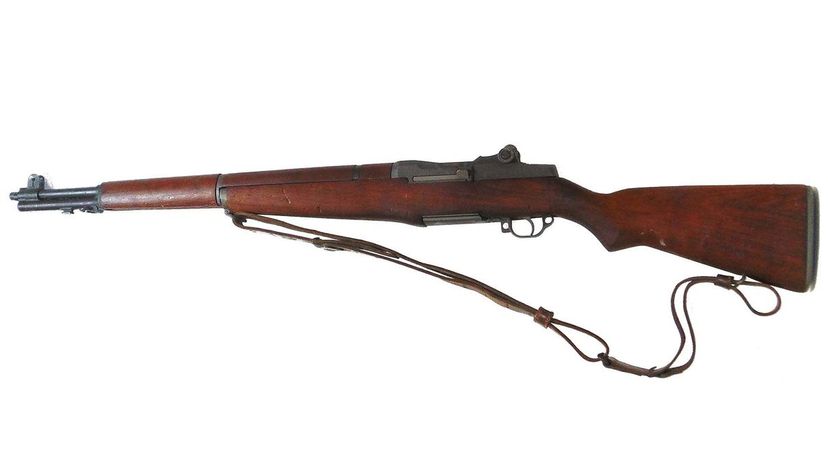
Canadian arms designer John C. Garand built the semi-automatic M1 Garand rifle equipped with an eight-round clip for .30-06 ammo. Many of the M1 Garand rifles made during the Second World War have been re-barreled.

German soldiers used to haul around two barrels of the MG42 because the barrels became hot after 500 rounds and could not be used. Here's an interesting fact: Gunfire from the MG42 sounds like the ripping of canvas fabric.
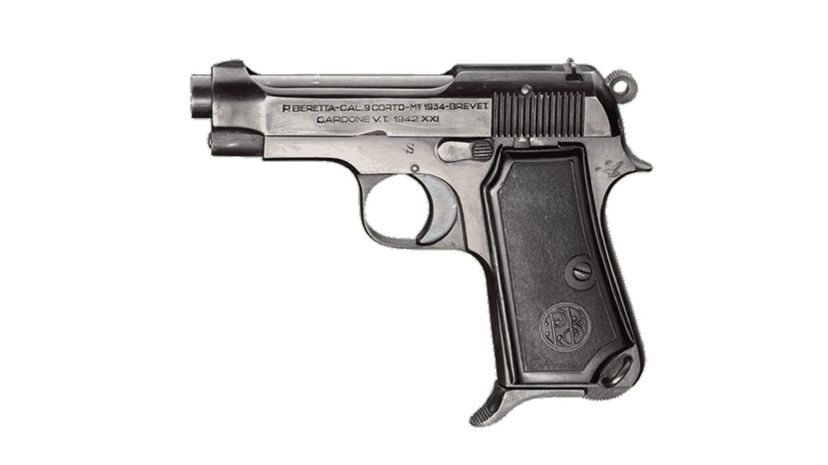
During the Elvis Week 2018 auction at Graceland, Lot 107 was a 1942 Beretta Model M1934 9mm Corto Caliber Pistol that was owned by General Omar Bradley and later gifted to Mr. Presley in 1970. General Bradley was the last surviving major military commander of World War II before he died in 1981.
Advertisement

Sometimes called the "potato masher," the Stielhandgranate ("stick grenade") was comprised of a metal canister filled with explosives on the end of a hollow wooden stick. Soldiers triggered the device by opening the cap on the handle's base and tugging a cord before hurling the grenade.
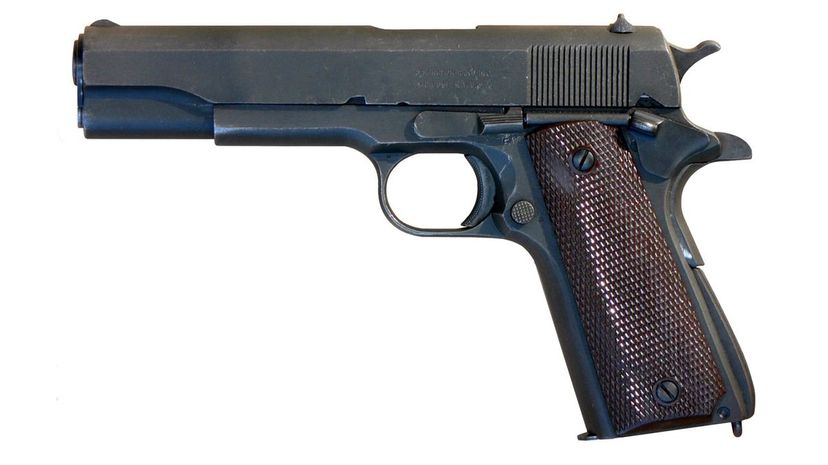
The M1911A1 was another conventional weapon that the Americans used during World War II; both pistols were .45-caliber semi-automatic. John M. Browning crafted the M1911 and Colt issued the weapon on March 29, 1911.
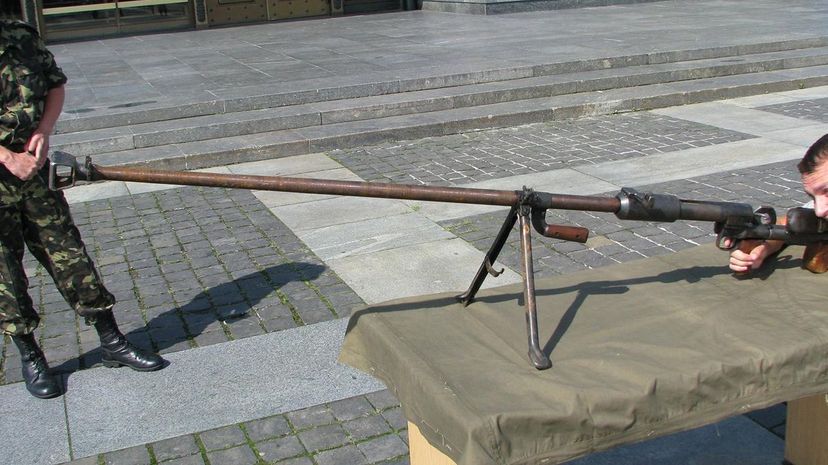
Founded in 1916, The V.A. Degtyarev Plant Open Joint-Stock Company mass-produced the PTRD. The initials comprise the Russian abbreviation for "Degtyarev anti-tank rifle." The company would later manufacture other war weapons, such as the Kord heavy machine gun and the Gsh-30 aircraft cannon.
Advertisement
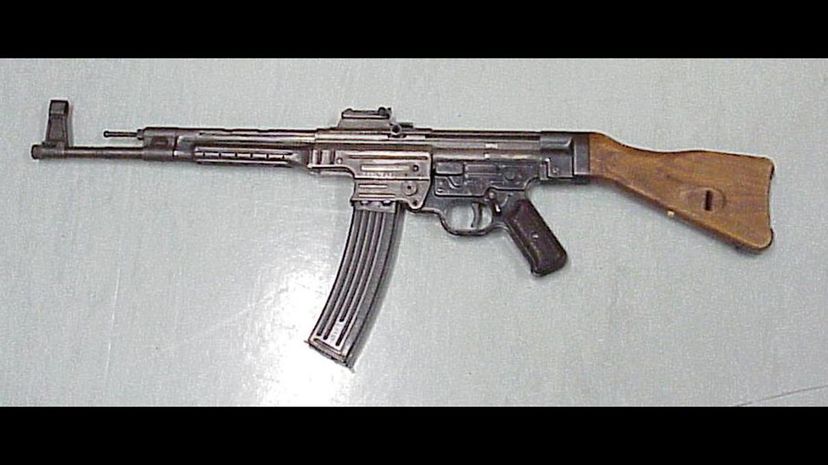
The StG 44 was the first assault rifle that Germany adopted and produced on a grand scale. Initially unveiled as the MP43, the StG 44 designation adhered to Sturmgewehr ("assault rifle") naming protocol rather than a pistol classification.
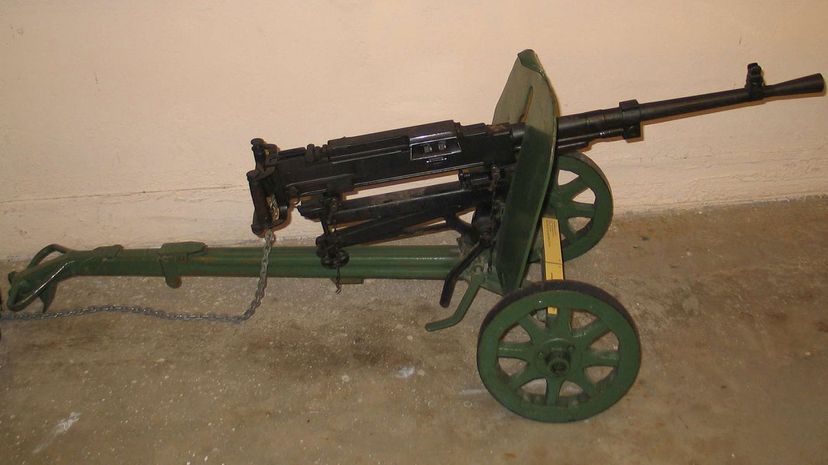
The Russian V.A. Degtyarev Plant Open Joint-Stock Company mass assembled the SG-43, which is the Goryunov 7.62-mm machine gun, in a short period. The SG-43 inspired the SA-43 semiautomatic firearm.
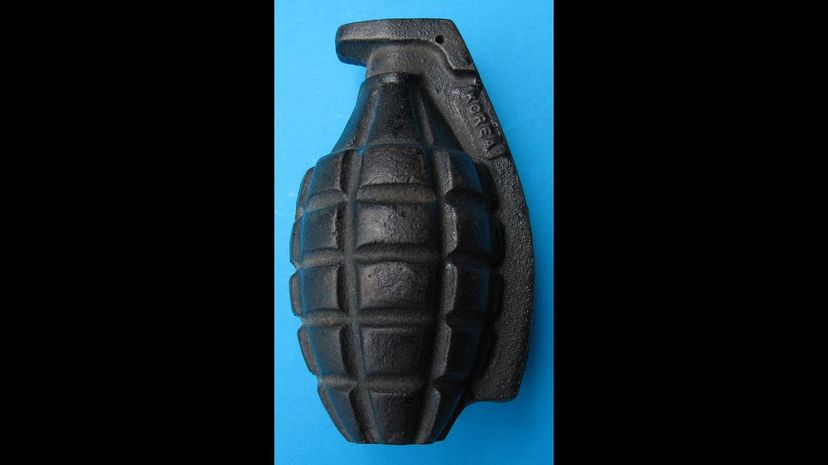
Adopted in 1918, the United States military used Mk 2 grenades during World War I through the Vietnam War. The one-pound, five-ounce "pineapple grenade" was ideal for close-range battle.
Advertisement
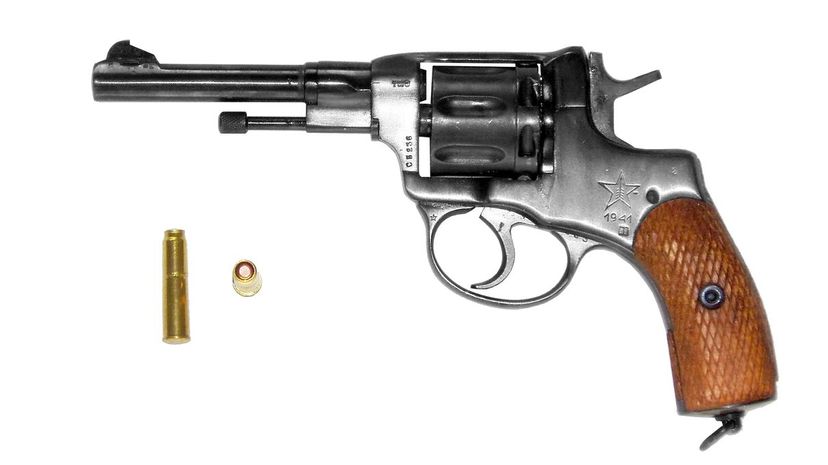
Belgian gunmaker Henri-Leon Nagant designed the M-1895 Nagant revolver for Russian Czar Nicholas II's army. In a twist of ill-fate, during the Russian Revolution in 1917 the same weapon was used to assassinate the czar and his family.
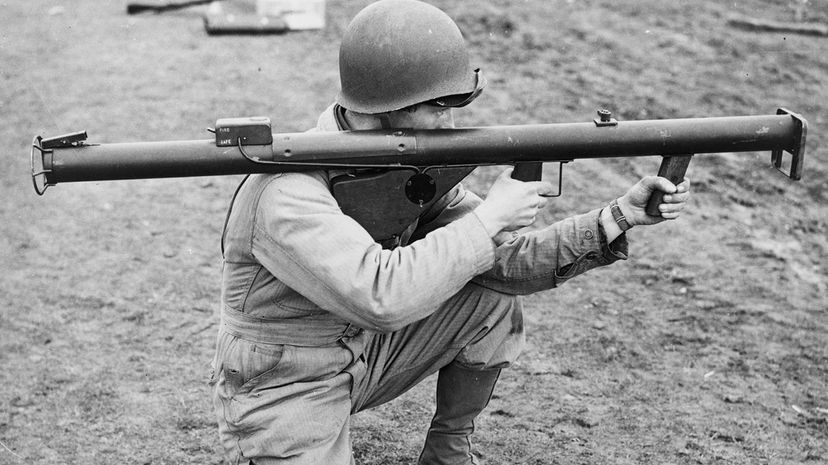
The United States entered World War II with the military mission of penetrating German tank armor. Lieutenant Edward Uhl was fresh out of college when he helped engineer the shoulder-mounted anti-tank rocket known as the bazooka, in 1942.
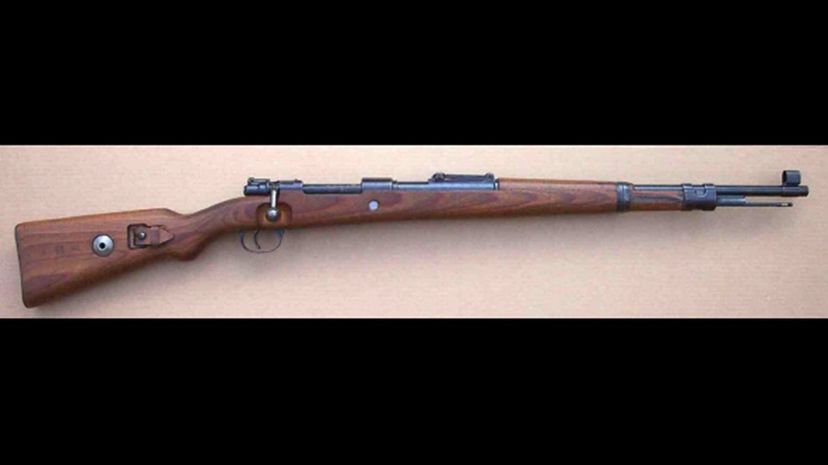
Germans equipped snipers with a standard arsenal that included the Karabiner 98 rifle and 1.5-power scopes. Snipers complained that the scopes were not sufficient, and many preferred seized Mosin Nagants over the Mauser Karabiner 98k rifle, which is a smaller version of the Gewehr 98.
Advertisement
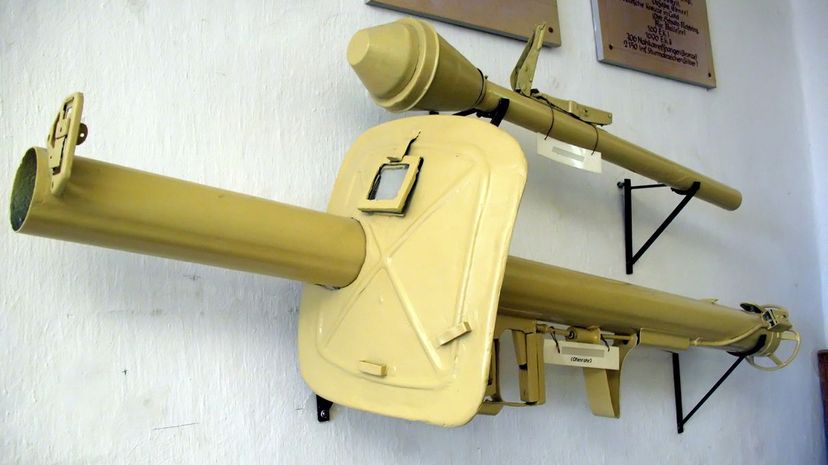
A Broadway adaptation of the World War II D-Day invasion of Normandy went awry during the musical's "live-fire exercise." Titled "The Longest Day: The Musical," the play's onstage German Panzerschreck anti-tank rocket inadvertently misfired, blowing a hole in the rear of the 42nd Street theater.

The Imperial Japanese Army Air Service outfitted the Aichi E13A reconnaissance floatplane, which Allies codenamed "Jake," with one Type 92 machine gun in the rear cockpit. The Aichi E13A flew at a maximum speed of 235 miles per hour and could carry a bomb load of 551 pounds.
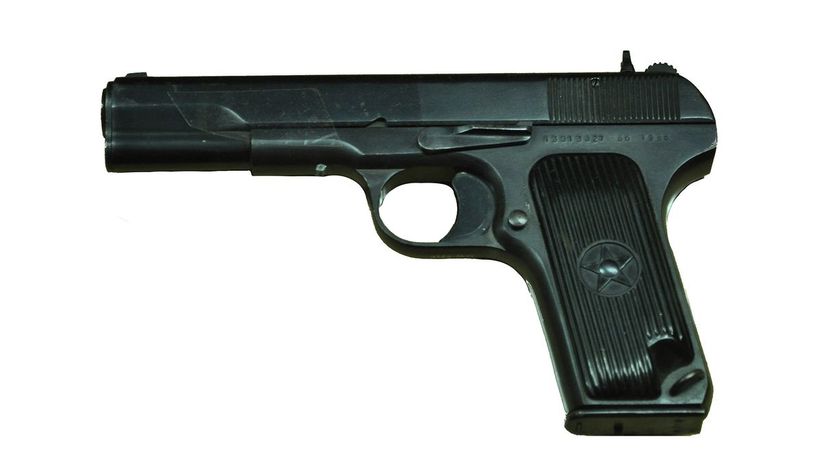
Low water levels caused by a drought revealed the remains of a Soviet fighter-bomber plane and two of its crew members in the tributary of the Bzura River near Kamion, Poland in 2015. Germans shot down the plane during a World War II air fight in 1945. The pilot's TT pistol was recovered, as well.
Advertisement
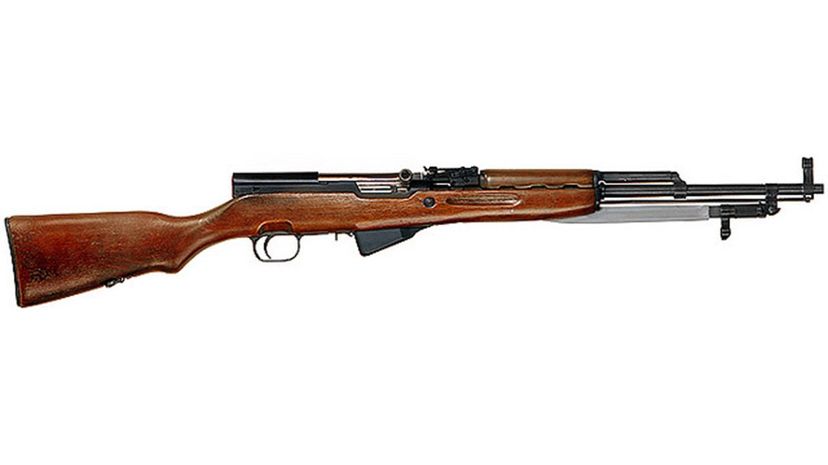
Designed by Sergei Simonov, the SKS carbine stands for "Samozaryadnyj Karabin Simonova" or "Simonov self-loading carbine." The "idiot-proof" World War II weapon flooded the U.S. gun market in the 1980s.
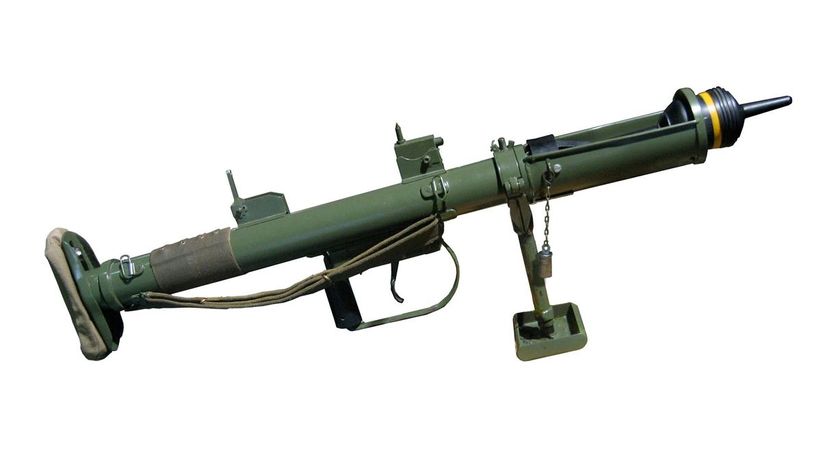
The British adopted the shoulder-mounted PIAT, Projector Infantry Anti-Tank Mk I, rocket-propelled grenade launcher during World War II. Soldiers complained that the PIAT often jammed and was no good for distances past 50 yards.
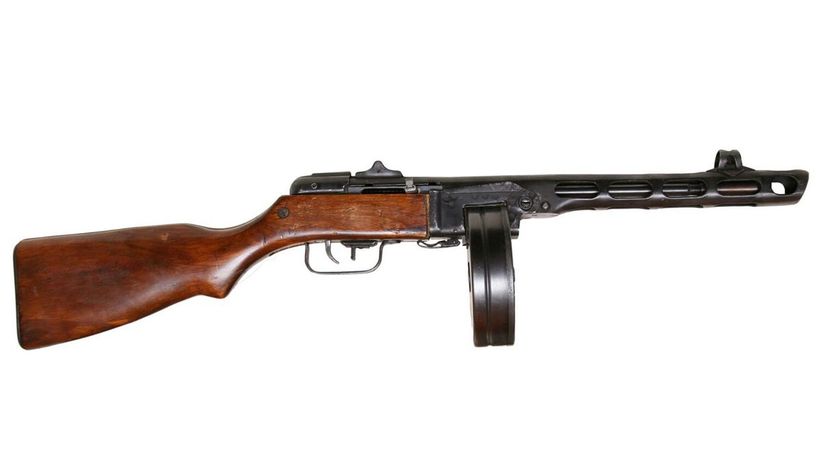
Soviet engineer Georgy Semyonovich Shpagin designed the PPSh-41 submachine gun to resemble the PPD-40, and the gun was simpler to manufacture than Degtyarev's model. Soviets assembled the PPSh-41 in less than half the time it took to produce the PPD-40.
Advertisement
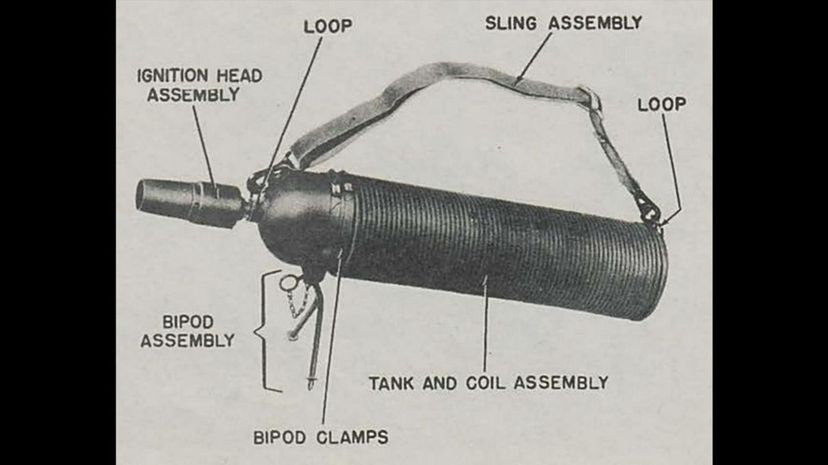
In 1944, Germans adopted the Einstossflammenwerfer 46, which had lightweight cylindrical tubing. The model emitted a single burst of flame that lasted for less than one second. The German army uses a disposable version of the one-shot flamethrower today.
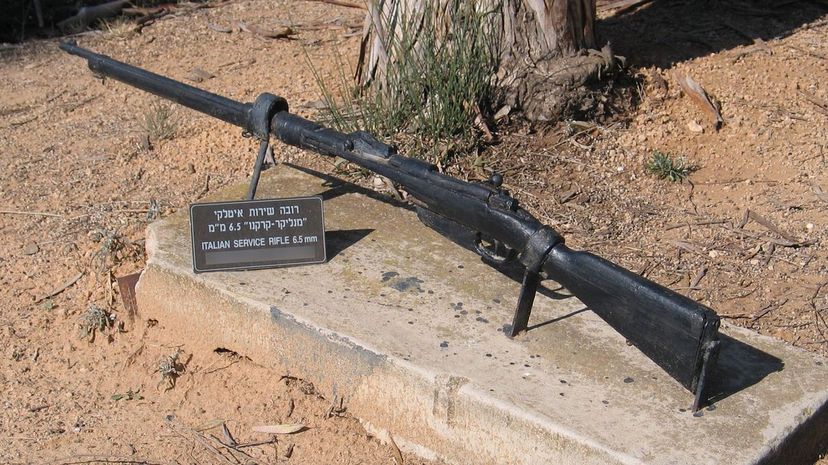
The Italian World War II Mannlicher-Carcano rifle was the preferred weapon of the German Volkssturm in the final days of the war. Critical users dubbed it the "humanitarian rifle" and reported that the weapon was not very reliable.
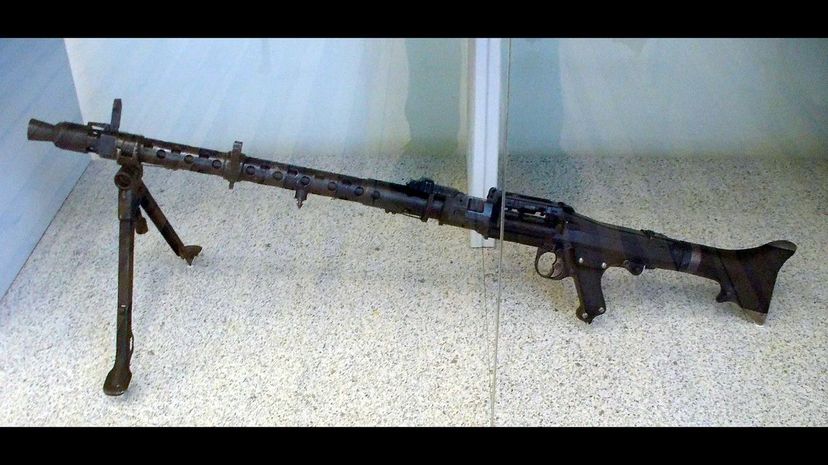
The German MG34 machine gun preceded the MG42. Without its mount, the MG34 weight a little over 42 pounds. In the years leading up to the Second World War, the gun was used defensively as tank artillery and an anti-aircraft weapon.
Advertisement

The double-action German Walther P38 auto pistol was the second most preferred enemy weapon among Allied forces. The German 9mm P08 Luger automatic was the most favorite seized combatant gun.
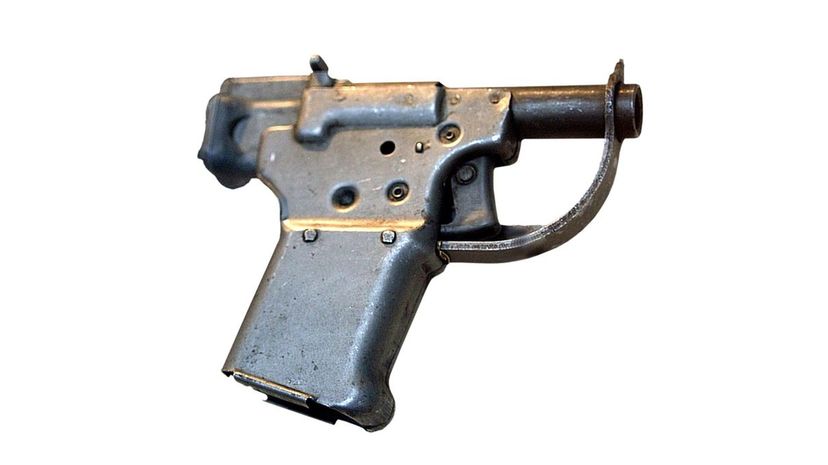
The single-shot FP-45, .45-caliber "flame projector," was the idea of the U.S. Army Joint Psychological Committee. A division of General Motors engineered the pistols for insurgents in World War II Axis regions of Asia and Europe.
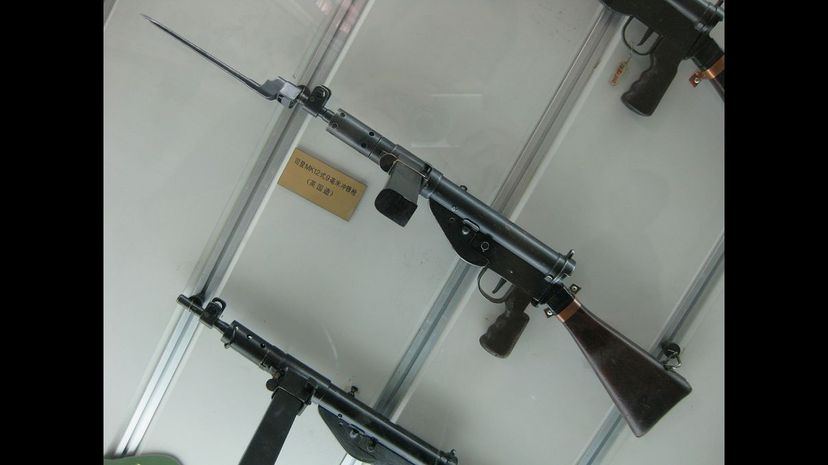
Adopted in 1941, the British-made Sten submachine gun was considered a crude, but effective Second World War weapon. The cheaply produced Sten was made of welded stamped steel parts.
Advertisement
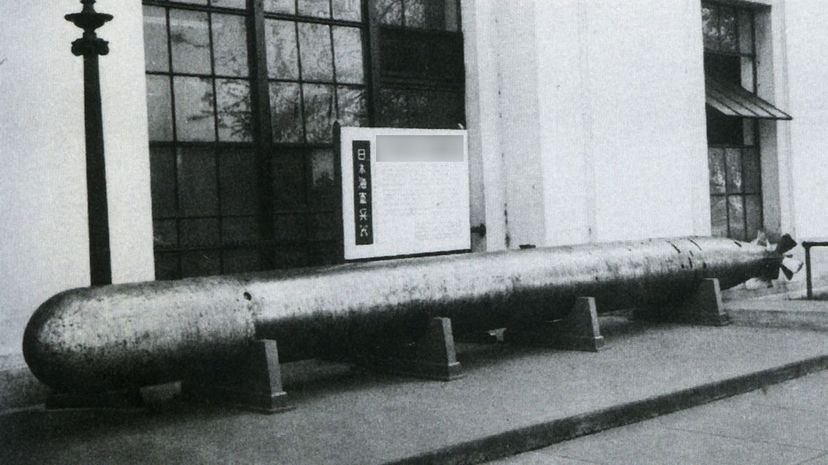
Japan's "secret" World War II Type 93 torpedo was nicknamed "Long Lance" by war historians. The explosive device was equipped with a huge warhead and could travel more than 20,000 yards at a speed of 45 knots.
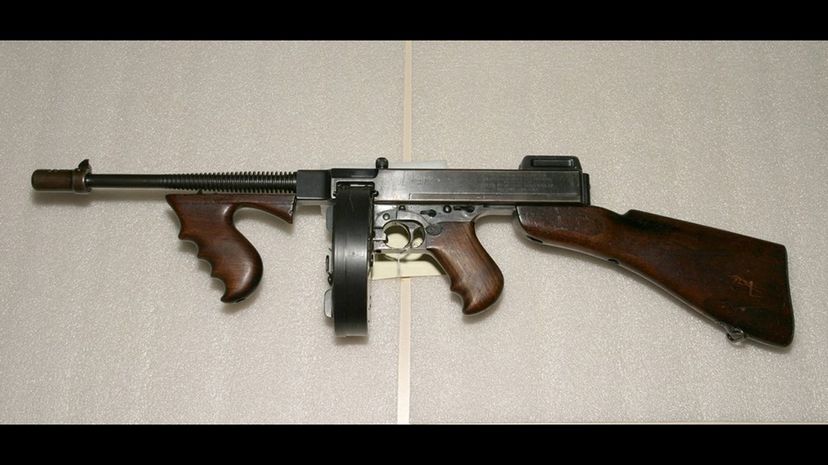
Between 1942 and 1945, over 1.2 million Thompson submachine guns were purchased. The gun is a roaring '20s classic, and has been featured in numerous Hollywood films in the hands of fictional gangsters played by Humphrey Bogart, James Cagney and others.
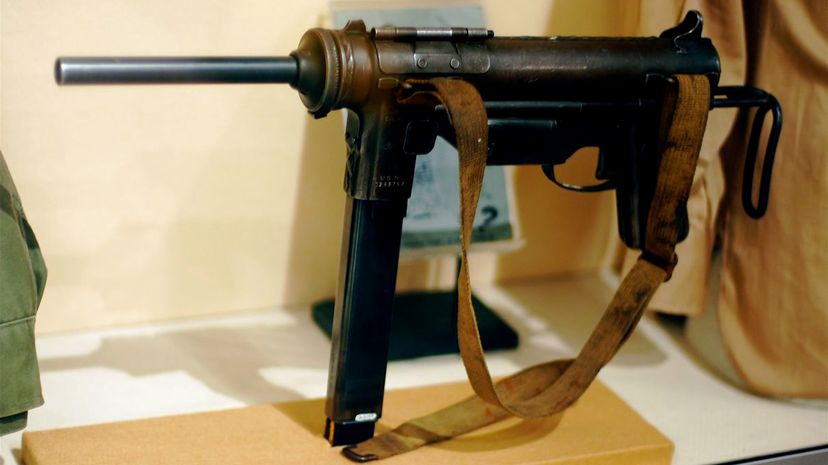
During World War II, the M3 Grease Gun's compact size was convenient for tank units. The gun was used extensively in subsequent wars as well. The M3 earned its moniker because it looks similar to the auto mechanics tool of the same name.
Advertisement
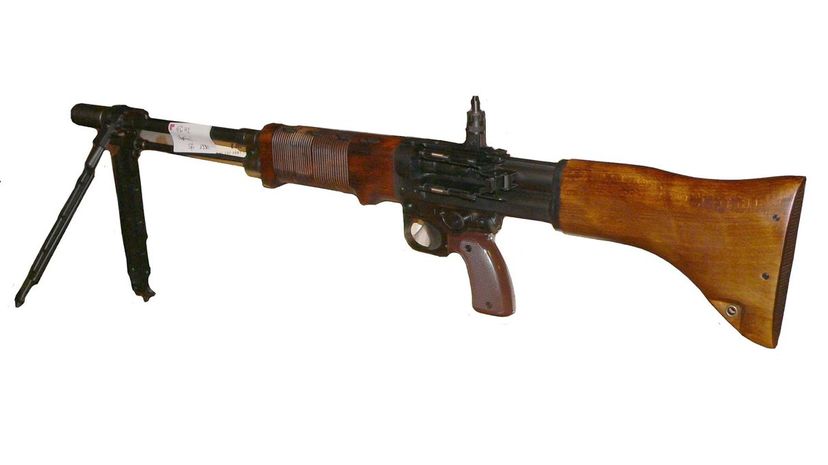
British riflemen outgunned German paratroopers at the Second World War assault on Crete in early 1941. In response, Germany introduced the FG42 rifle to give its paratroopers longer range.
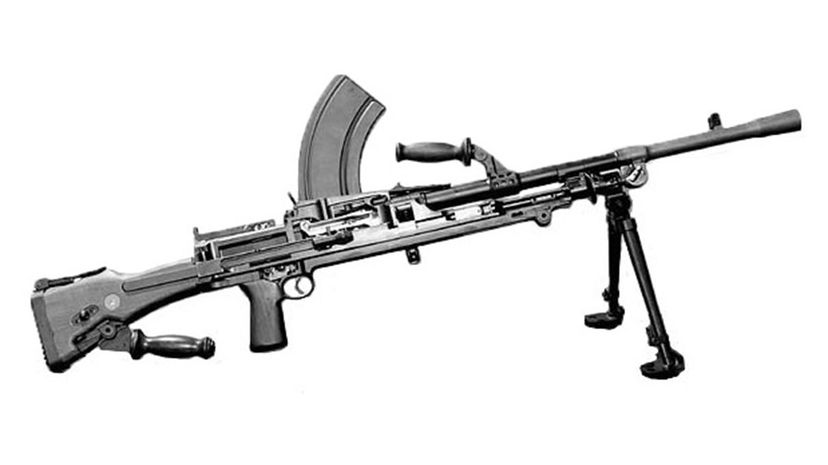
Czechoslovakian arms designer Vaclav Holek engineered the gas-powered Bren gun in 1935 for Royal Small Arms Factory. The war weapon comes standard with a spare barrel and a 20-round box.

The United States Marine Corps first adopted the KA-BAR knife, and other branches of the military followed suit shortly thereafter. At the start of World War II, soldiers complained that the same knives that had been issued during World War I were not easy to grip.
Advertisement
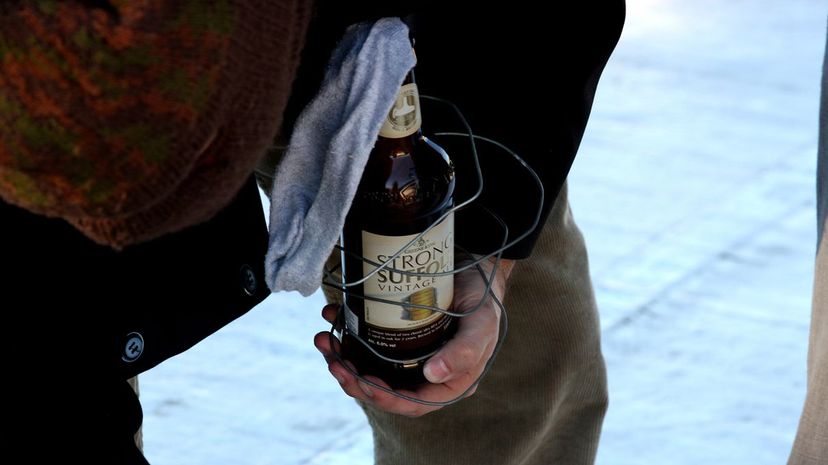
Vyacheslav M. Molotov is credited for devising the Molotov cocktail concept. Molotov also owns the distinction of having helped to negotiate the German-Soviet Nonaggression Pact of 1939 that prompted Hitler to invade Poland, the event that triggered World War II.
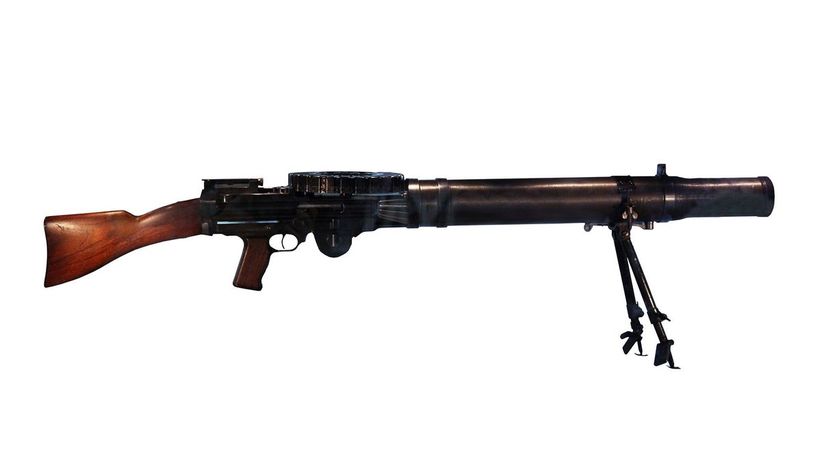
Designated as a light machine gun, the gas-powered Lewis gun was the firearm concept of U.S. artillery officer Colonel Isaac Newton Lewis and Dr. Samuel N. McClean. The U.S. Army rejected the design, so Lewis produced the firearm through Birmingham Small Arms in the U.K.

The 1903 "Springfield rifle" is a derivative of the German Mauser. The United States used the bolt-action rifle in both world wars and to a limited extent in the Korean War. Gun experts are quick to point out that not all M1903 models were produced by Springfield Armory.
Advertisement
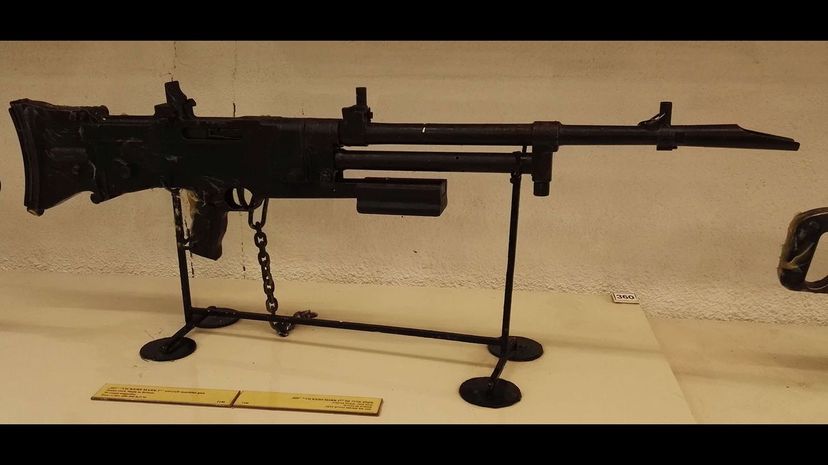
Based on the Vickers-Berthier light machine gun, the gas-powered Vicker K Gun was manufactured for the British Royal Air Force by Vickers-Armstrong. The gun was meant to be operated on in-flight, high-speed aircraft.
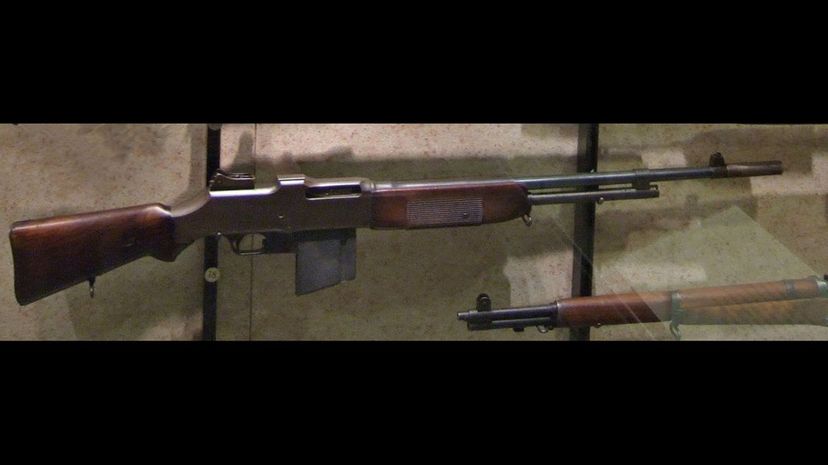
Developed during World War I, the M1918 was the first Browning Automatic Rifle, or BAR. In the Second World War, every infantry squad had a "BAR man" and a soldier who hauled and supplied extra magazines for the weapon.
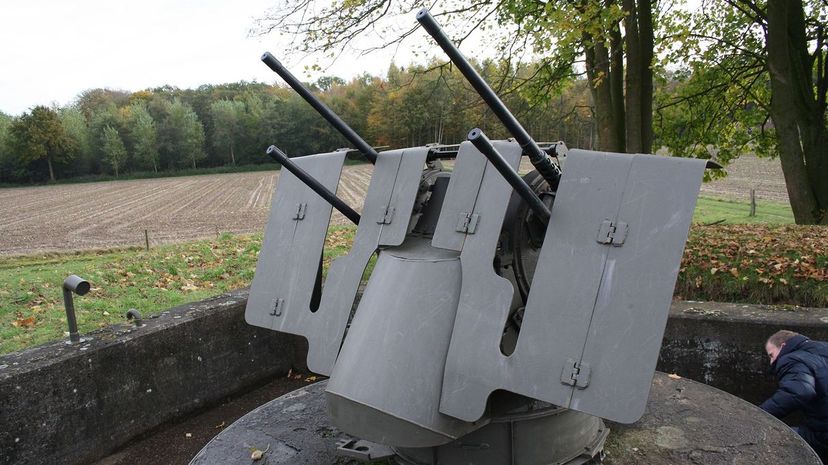
The M45 quadmount consisted of four .50-caliber Browning machine guns that were positioned on the sides of the electric turret. The 360-degree rotating weapon was used during World War II as the Korean War.
Advertisement
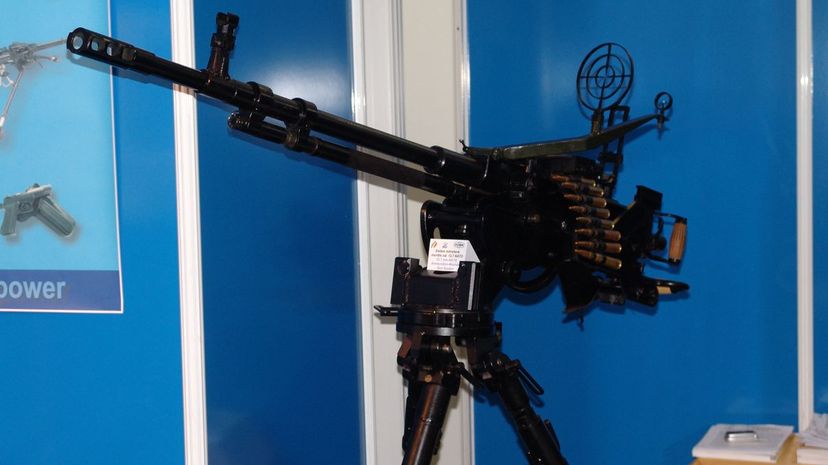
The DShK heavy machine gun is similar to the .50-caliber M2 Browning. Georgy Shpagin supplied firearms designer Vasily Degtyaryov with the "squirrel cage" to produce the DShK. The Soviet Army adopted the machine gun in 1938.
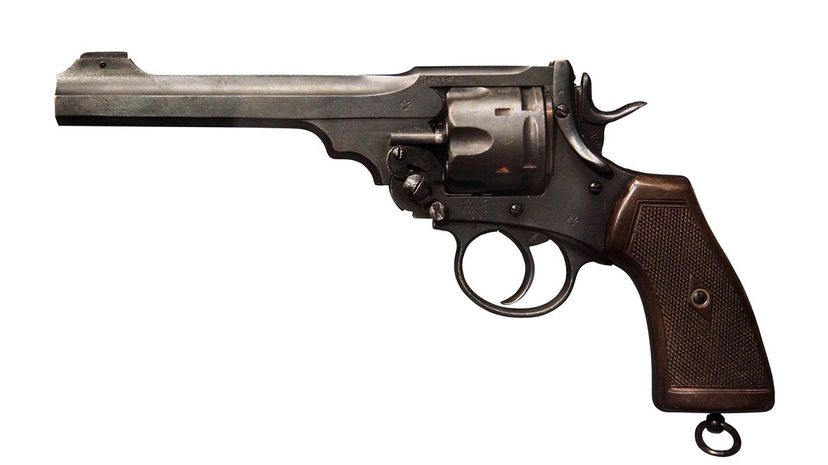
Initially manufactured from 1915 to 1919, the Webley & Scott Mk VI service revolver took what is known today as a speedloader. The firearm also came with a bayonet, which was a rarity.
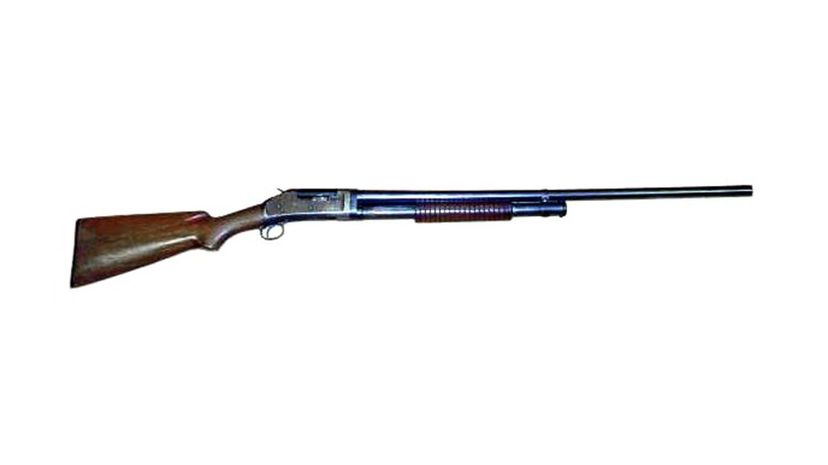
John M. Browning engineered the Winchester Model 1897, of which approximately one million were manufactured until 1957. The military standard was equipped with a hand guard. Model 1897 inspired the Winchester Model 12 firearm concept.
Advertisement
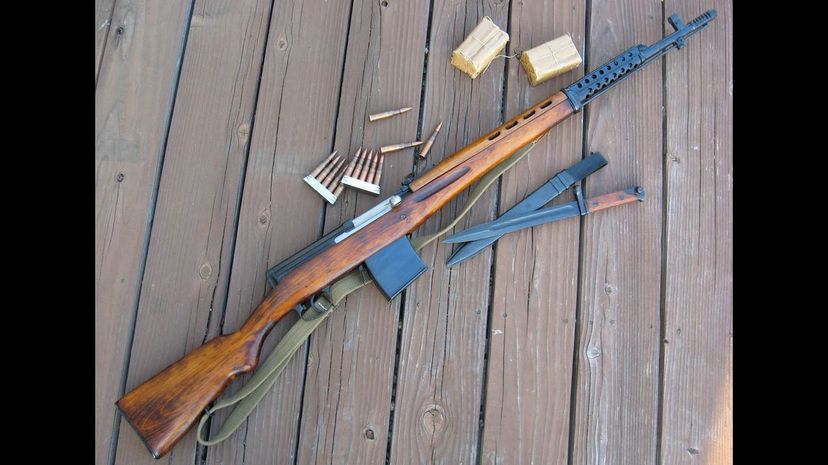
The Russian self-loading Tokarev SVT-40 accommodates 10 rounds of ammunition. The SVT-40 was manufactured to replace the Mosin Nagant 1891/30, but the transition never went into effect.